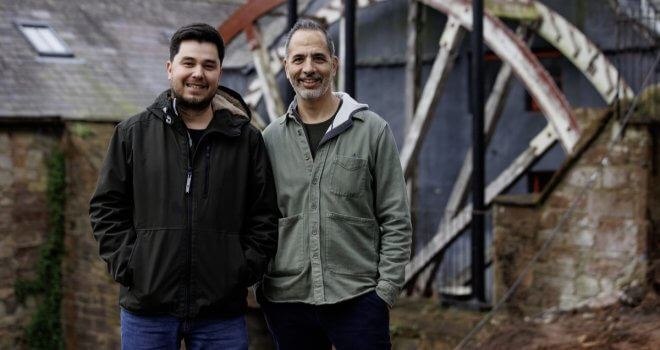10 Powerful Tips For Approved Planning Permission Every Time

Getting your planning permission approved can be a nerve wracking experience. You’ve got an idea you really believe in, but that doesn’t automatically mean it’ll be given the go-ahead.
The success of your application will depend on how well you prepare, as well as how accurate your designs are – and sometimes even your relationship with the relevant parties. Whether you’re hoping to get planning permission for your home or business, getting your planning permission approved is largely the same.
With this in mind, we’re going to give you 10 of the most powerful tips for approved planning permission here. Take a look!
Spend Time Creating High Quality Designs
Designs are the most important part of the entire process so they should be high quality and accurate to the best of your knowledge. You shouldn’t rush this part, as they will make the biggest difference to your success.
Whether you’re hoping to build a house or a brand new office building, the design is essential. Things to remember as you create your high quality designs include:
- Creating a smart layout that makes sense
- Use appropriate scaling to give an accurate picture of what should be expected when the project is complete
- Your design should protect and enhance the surrounding areas
To fully optimise your designs, you can find out more about Verified Views or even consider working with an architect.
Working with a company that is skilled and knowledgeable in obtaining planning permission will help you to save a lot of time and hassle. You can create the designs yourself, but it’s nearly always worth forking out to have them created by a professional that has done this many times before.
Look Into The Relevant Planning Policies
If you’re going to put together a design that helps you to get the permission you need, you’ll first need to look into relevant planning policies. Local planning authorities could have multiple overlapping policies in their development plan.
You will need to be able to determine which ones will directly affect your own application before you go ahead with it. Make sure you look into them carefully and make any notes that could be relevant to your own plans.
Certain issues will need to be taken into account with any application. They are usually called material planning considerations. Some common examples (your local planning authority will decide which are more important) include:
- Noise
- Loss of light
- Loss of privacy
- Effect on trees
- Highway issues
- Unacceptable uses
A skilled business with experience will be able to look into this for you if the idea of looking into this yourself is already confusing for you.
- Build A Strong Relationship With Your Planning Officer
Developing a positive relationship with your planning officer will go a long way to having your plans approved. This person will make the final determination on your application, so this is one of the most important and powerful things you can do when you want planning permission.
Again, a skilled architect or planning consultant may be better at this, as it does require some skill.
They will have experience working with the relevant planning authority so may find it easier to do this than you. When you choose to work with a professional, they will also have the means to keep an eye on your application and help to ensure a positive outcome if any issues arise.
Contact The Relevant Parties
Your planning proposal may require things like risk assessments, tree surveys, and more. When you take the time to contact the relevant parties ahead of time, your architect will prevent technical issues from undermining your proposal.
Hire A Skilled Professional
Many people decide against this as they think they’ll end up spending too much money and they want to keep costs as low as possible. However, this can be a great investment, and in the long run it could actually help you to save money. To find a firm that you want to work with you should look for the following:
- A professional that can collaborate well
- A professional that doesn’t dazzle you with jargon and can communicate well
- A professional that has expertise on design policies and UK planning law
- A professional that is RIBA chartered – these are the only architectural practices endorsed and promoted by the Royal Institute of British Architects (RIBA)
Do your research and consider asking people in your industry for recommendations. If you’re serious about obtaining planning permission, this is one of the best things you can do.
Appeal If Your Application Is Rejected
If your planning application is rejected, or even has been approved with conditions that you are not happy with, you should speak to your local planning authority. All is not lost and it doesn’t mean your dream of obtaining planning permission is over.
You could potentially submit an amended application – and this can usually be done without you having to spend anymore money. It’s easy to resubmit your application using the planning portal service.
However, if you believe that the authority’s decision is unreasonable, you may be able to submit a planning appeal. Either way, if you’re not happy with the outcome then there are a few things you can do.
Be Sure You’re Ready To Start Building Work Within 3 Years
Once you’ve been given permission, you’ll need to be willing to get to work ASAP. Planning work must start within 3 years.
If you were planning on making changes to your house, get planning permission, but later decide to sell, the planning permission could add substantial value onto the house as it can be sold on with it. This will save future owners who want to make changes a lot of hassle.
Talk To Those In The Area About Your Plans
Speaking to those in the area about your plans could go in your favour. If you can get them on board, it could make a big difference to how quickly you are granted permission. Your neighbors might even be able to give you some advice on similar projects nearby or any useful professionals that they have worked with in the past.
Allow A Planning Officer To Make Changes To Your Plans
If you choose to work with a planning officer (and you should), make sure you allow them to make changes to your plans if they believe it is a good idea.
This can feel disheartening at first, but they will only make changes they deem necessary to help you get the permission that you need. Don’t get so attached to your project that small tweaks can’t be made. These tweaks will be imperative in getting your permission granted.
Be Patient
Planning permission is not something you will be approved of quickly. Patience is essential when you want planning permission.
The least amount of time it will take you to get planning permission is 8-10 weeks, and that’s only if not alterations are required. More often than not, alterations will be required! Planning conditions may also need to be considered if your project is signed off.
Expecting the unexpected and remaining patient all throughout the process is key if you’re going to keep your sanity intact. This is why you should always leave yourself plenty of leeway for project completion.
Use the above 10 pointers to get approved planning permission. All is not lost if your project is rejected at first, but working with a pro from the get-go can save you a lot of time and hassle.




